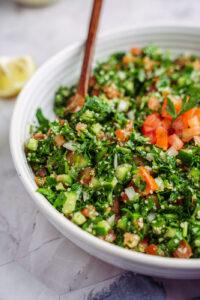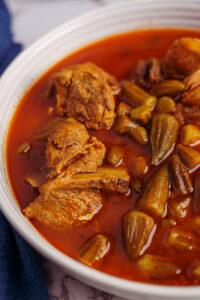Onion salad, a vibrant and zesty dish, holds a special place in the culinary traditions of the Middle East. With its origins believed to trace back to the ancient cities of Aleppo in Syria and Adana in Turkey, both situated in close geographic proximity, this salad offers a tantalizing blend of flavors that have delighted palates for generations.
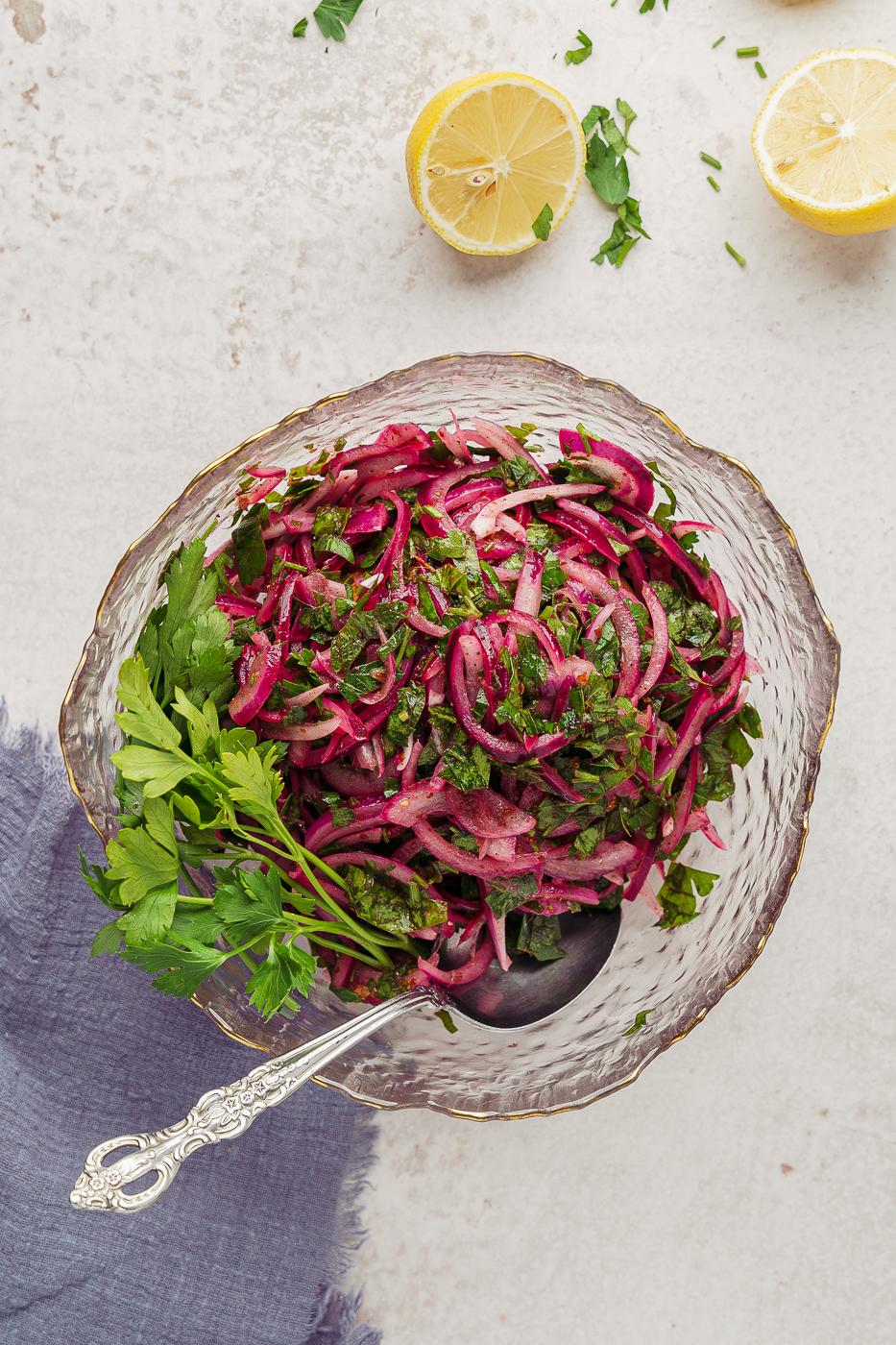
What is Onion Salad?
Onion Salad is a refreshing side dish that combines the sharpness of onions with the tang of sumac, a regional spice. The salad typically features thinly sliced red onions, sumac, parsley, and often includes and a sour note from lemon juice or pomegranate molasses and sometimes a kick from chili peppers. This combination creates a harmonious balance of tanginess, earthiness, and brightness that enhances any meal.
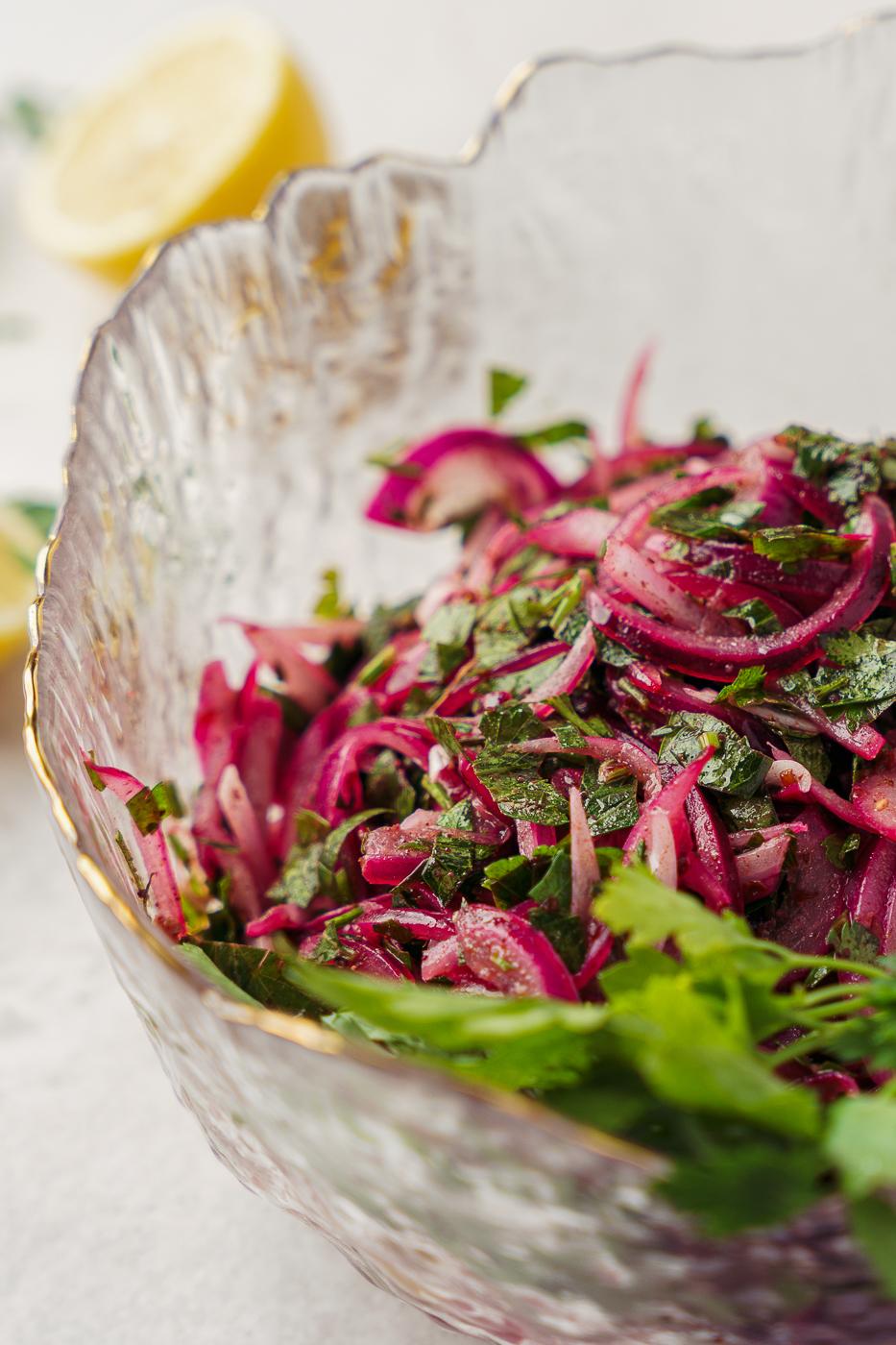
Origins of the Salad
Onion salad “Salatat Biwaz”, has been a beloved staple for centuries in Aleppo, one of the oldest continuously inhabited cities in the world, it boasts a rich culinary tradition that reflects its diverse history and cultural influences. Situated at the crossroads of the Mediterranean, Middle East, and Asia, Aleppo has been a melting pot of culinary exchange for centuries.
While the basic components of onion salad remain consistent, variations abound across the region. Some versions may include additional ingredients such as mint, tomatoes, red bell paper, paper flakes, or pomegranate molasses, adding complexity to the flavor profile. In Adana, variations may feature different ratios of lemon juice to sumac or the inclusion of crushed garlic for an extra kick of flavor.
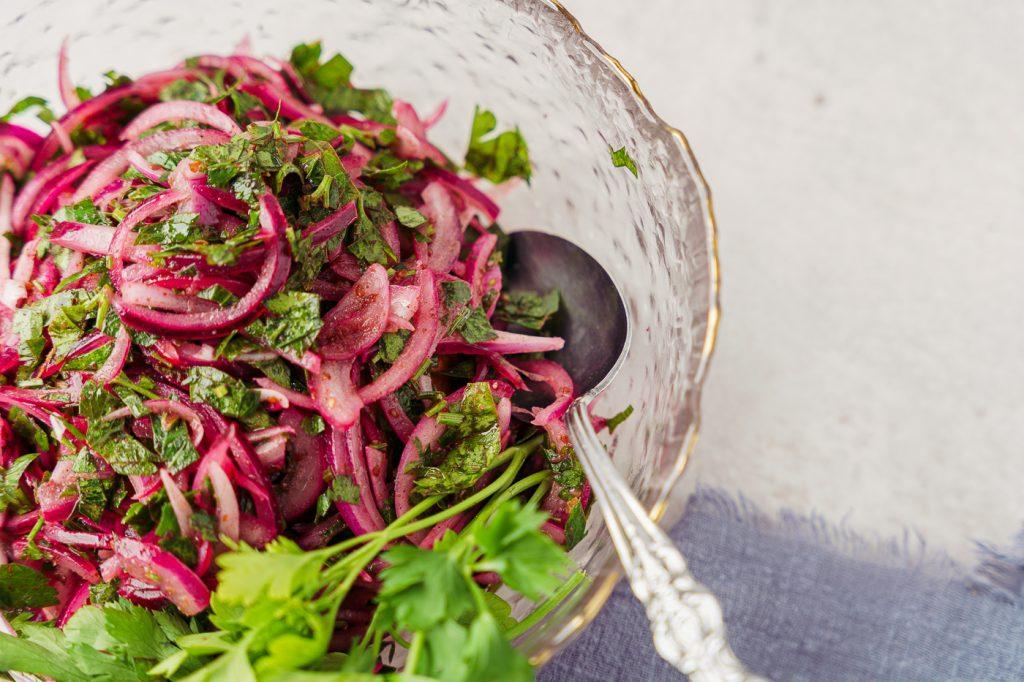
Serving Suggestions
Onion salad is versatile. It shines brightest when served alongside grilled meats, especially with kebabs like Aleppo khashkhash kebab, Adana kebab, or middle eastern kofta kebab. The tanginess of the salad balances the richness of the meat, offering a delightful contrast in every bite. But don’t just stop at grilled meats! This salad is also a great accompaniment to Lahm Bi Ajeen, or even as a zingy addition to a mezze platter.
Next time you’re enjoying grilled meat, be sure to give this salad the spotlight it deserves.
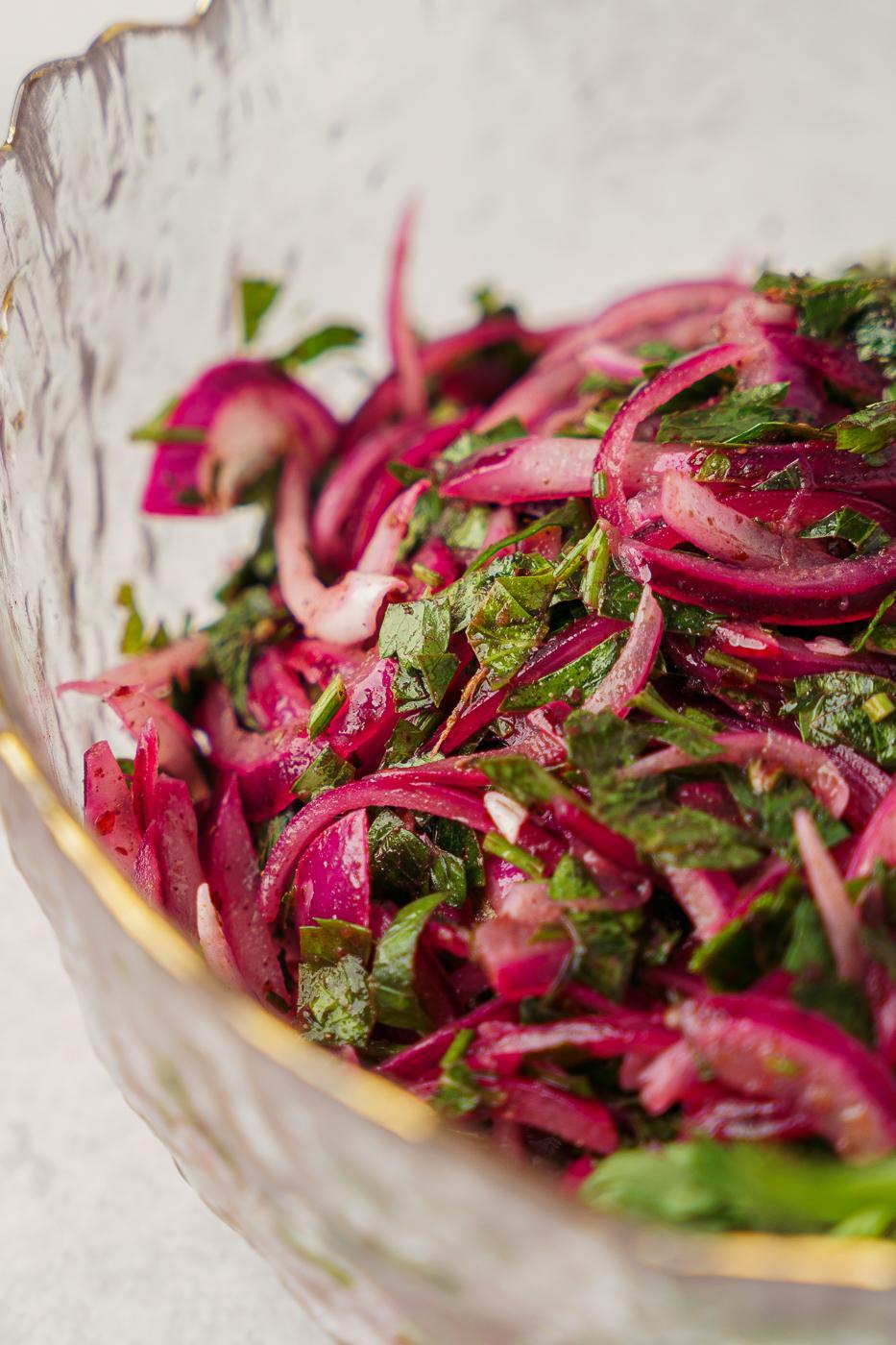
Ingredients needed to make onion salad
- Red onions: are chosen for their mild, sweet flavor and vibrant color. They provide a crisp texture to the salad. White onions can be used as a substitute. However, they have a sharper taste compared to red onions.
- Sumac: adds a unique tangy and lemony flavor to the salad, and it’s commonly used in the middle eastern cuisine. If sumac is unavailable, you can increase the amount of lemon juice to compensate for the tangy flavor.
- Parsley: adds freshness and a burst of green color.
- Lemon: Lemon juice provides acidity and brightness to balance the sweetness of the onions and enhance the overall flavor.
- Olive oil: contributes a smooth texture to the salad and adds richness to the overall taste.
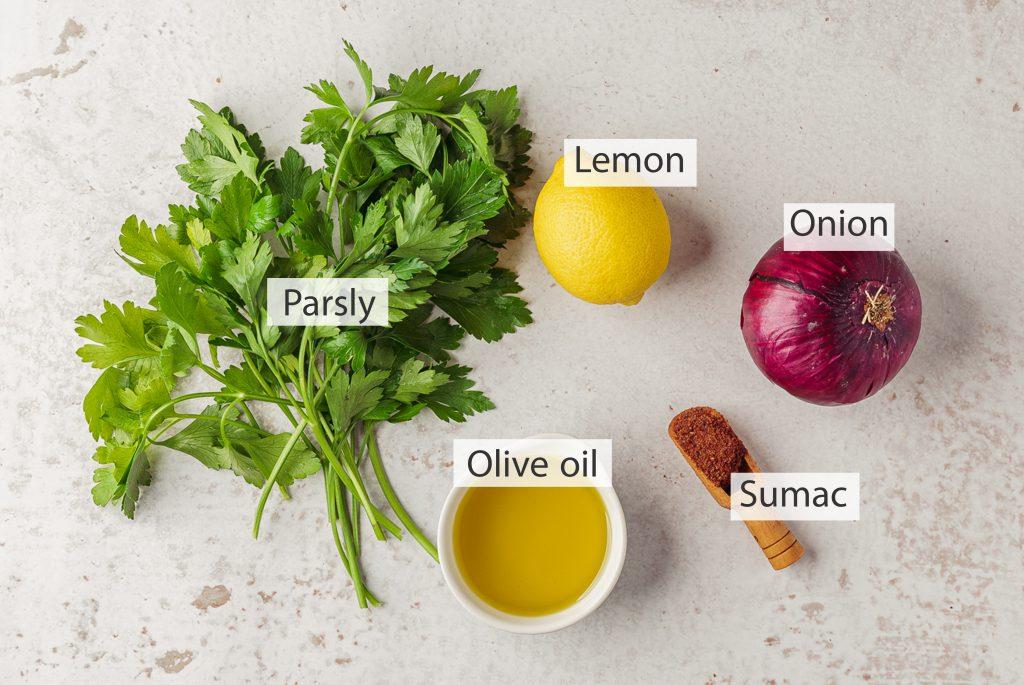
How to make onion salad Step by step
- Begin by peeling the red onions and slicing them as thinly as possible. Using a sharp knife or a mandolin slicer will ensure uniform slices. Thin slices enhance the salad’s texture and allow for better absorption of flavors.
- Transfer the onions to a bowl and sprinkle them with sumac. Squeeze the juice of one lemon over the onions. And drizzle olive oil over the mixture. Toss well to ensure every slice is coated.
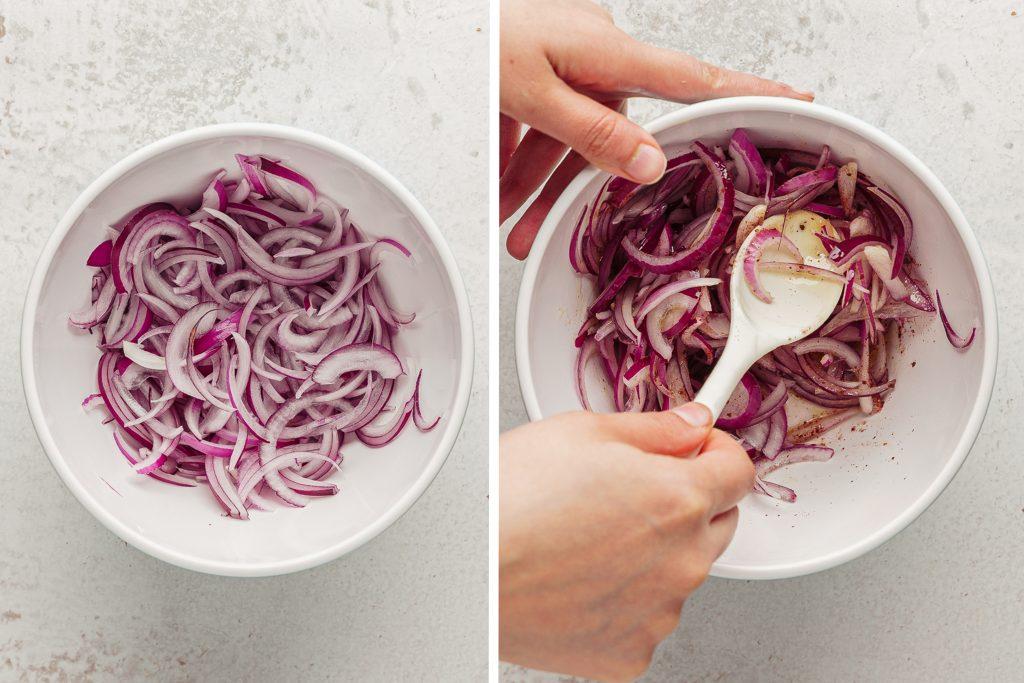
- Wash the parsley thoroughly and pat it dry. Roughly chop parsley, discarding the stems. The chopped parsley adds a burst of freshness and color to the salad.
- Add the chopped parsley to the bowl with the marinated onions. Mix well and ensure the parsley is evenly distributed throughout the salad.
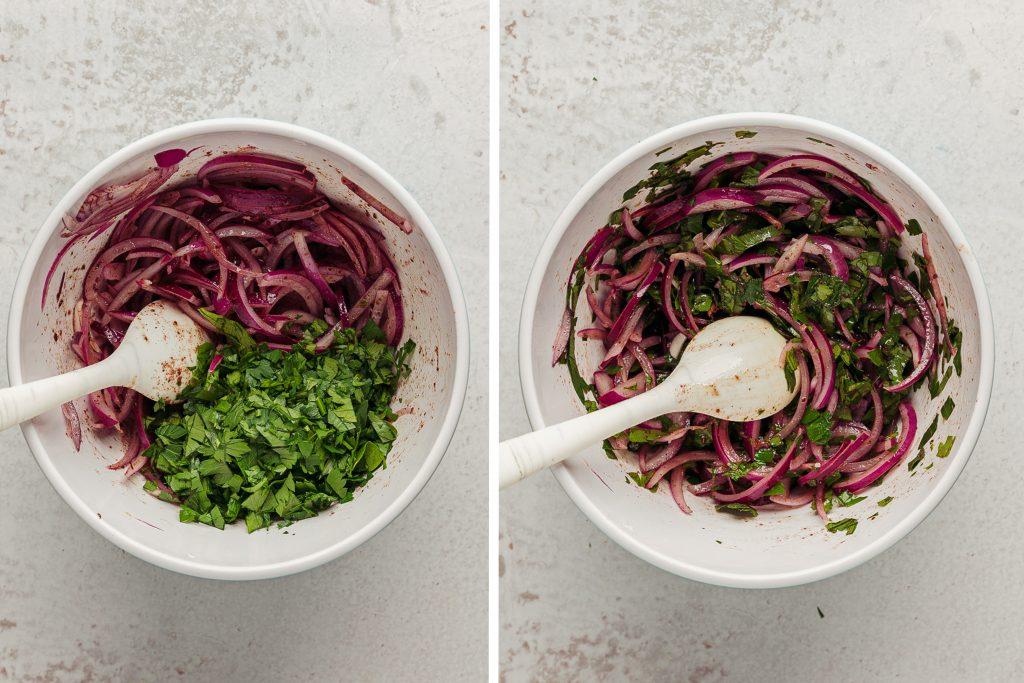
- Salad can be served immediately after preparing. Or allow the salad to rest for at least 30 minutes before serving. This will let the flavors meld together and will enhance the overall taste. But if you’re pressed for time or prefer a more pronounced onion bite, you can certainly serve it right away. The sharpness of the onions will be more pronounced when served immediately, and the flavors will be bolder. Some people might even prefer this fresher taste over the mellowed flavor that develops after resting. It’s all about personal preference.

Notes & Tips
- Quantity Adjustments: The quantities of each ingredient can be adjusted according to personal taste preferences. If you enjoy a more pronounced lemon flavor, you can increase the amount of lemon juice.
- Chili Peppers (Optional): If you prefer a bit of heat, you can add finely chopped red or green chili peppers. Adjust the quantity based on your spice preference.
- Pomegranate Molasses (Optional): While not listed in the ingredients, some variations of this salad include pomegranate molasses for an extra layer of sweetness and tartness. If desired, you can add 1-2 tablespoons.
- Onion Choice: Red onions are preferred for their color and milder taste, but you can substitute with white onions if desired.
- While the basic components of onion salad remain consistent, variations abound across the region. Some versions may include additional ingredients such as mint, tomatoes, red bell paper, paper flakes, or pomegranate molasses, adding complexity to the flavor profile.
- Sumac Substitution: If you can’t find sumac, you can use a little extra lemon juice, but the unique tang of sumac is hard to replicate.
- Serving Suggestions: This salad pairs beautifully with grilled meats, especially kebabs. It can also be served with Lahm Bi Ajeen or as part of a mezze platter.
- Storage: Store any leftover salad in an airtight container in the refrigerator for up to 2 days. The salad’s flavor might intensify over time.
Here’s some recipes you might want to check out
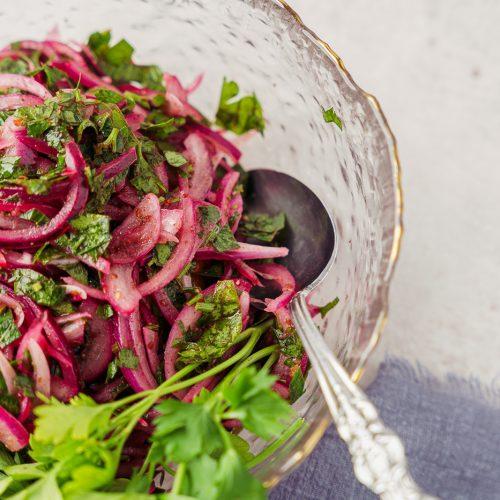
Middle Eastern Onion Salad
Ingredients
- 1 large red onion
- ½ lemon
- 2 tbsp olive oil
- 2 tsp sumac
- 1 cup parsley
Instructions
- Thinly slice onions, Place them in a mixing bowl.
- Add sumac, squeeze the juice of half lemon over the onions. And drizzle olive oil over the mixture. Toss well to ensure every slice is coated.
- Roughly chop parsley, and add over onion.
- Toss everything together until well combined.
- Salad is ready to serve.
Notes
- Onion Choice: Red onions are preferred for their color and milder taste, but you can substitute with white onions if desired.
- Sumac Substitution: If you can’t find sumac, you can use a little extra lemon juice, but the unique tang of sumac is hard to replicate.
- Serving Suggestions: This salad pairs beautifully with grilled meats, especially kebabs. It can also be served with flatbreads or as part of a mezze platter.
- Storage: Store any leftover salad in an airtight container in the refrigerator for up to 2 days. The salad’s flavor might intensify over time.


